Sap Solution Manager 7.2 Focused Run
Security & configuration validation can be used to check for the existence of clients 001 and 066.
The 066 early watch client and old delivery clients 001 are only security risks (unless in rare cases 001 has been chosen as execution client). Best to delete them from security point of view (see reference blog).
Setting up security and configuration validation rule to check for existence of clients 001 and 066
Go to the security and configuration validation policy tile:
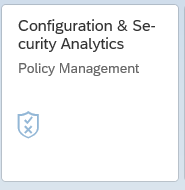
Create a new policy with the following syntax:
<?xml version="1.0" encoding="utf-8"?> <targetsystem xmlns:xsi="http://www.w3.org/2001/XMLSchema-instance" desc="Test CLIENTS Store" id="TEST_CLIENTS" multisql="Yes" version="0000" xsi:schemaLocation="csa_policy.xsd"> <configstore name="CLIENTS"> <checkitem desc="CLIENTS_CHECK" id="1.0.0.0"> <compliant>MANDT = '000' or MANDT = '010' or MANDT = '100' </compliant> <noncompliant> MANDT = '001' or MANDT = '066' </noncompliant> </checkitem> </configstore> </targetsystem>
In the compliant section add more clients that are valid and/or change the numbers to your own situation.
Basically the rule says: 000 and main client(s) listed are compliant. 001 and 066 are not compliant.
Running the check
Run the check will give you all existing 001 and 066 clients as incompliant items:
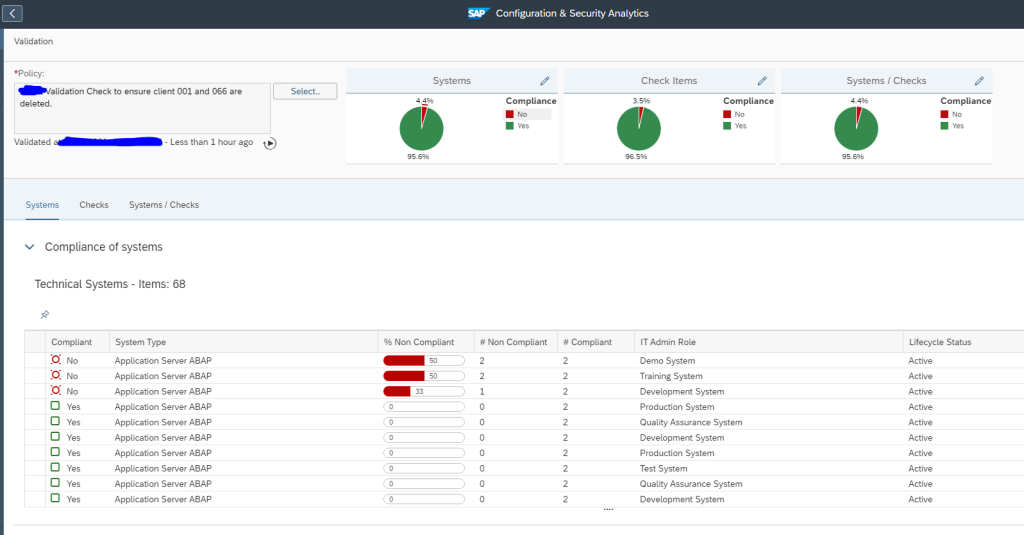
In a similar fashion to setting up email notification for system health check reports, you can also setup Automatic eMail for Security Validation of SAP Systems. For this you need a guided procedure that can run a security validation policy instead of running the system health check.
In our previous blog we have explained how you can setup the Security Validation policy.
Follow the following steps to create the guided procedure that can automatically execute the policy check on your SAP systems.
Creating Guided Procedure for Configuration and Security Analytics
For creating the guided procedure navigate to the Guided Procedures app in the Focused Run launch pad.
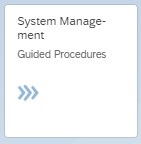
In the Guided Procedures app navigate to the Catalog page and click on the ![]() sign to create a new Guided Procedure.
sign to create a new Guided Procedure.
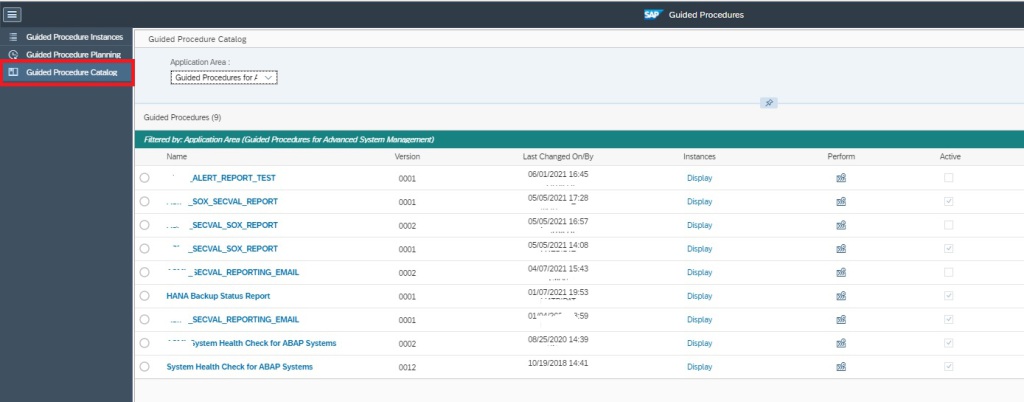
In the pop-up provide a name and description for the guided procedure and click on Create.

Back in the catalog page, click on the newly created guided procedure name to open it in edit mode.

The guided procedure will now open in a new tab in the browser. Click on the edit button to start editing the guided procedure.
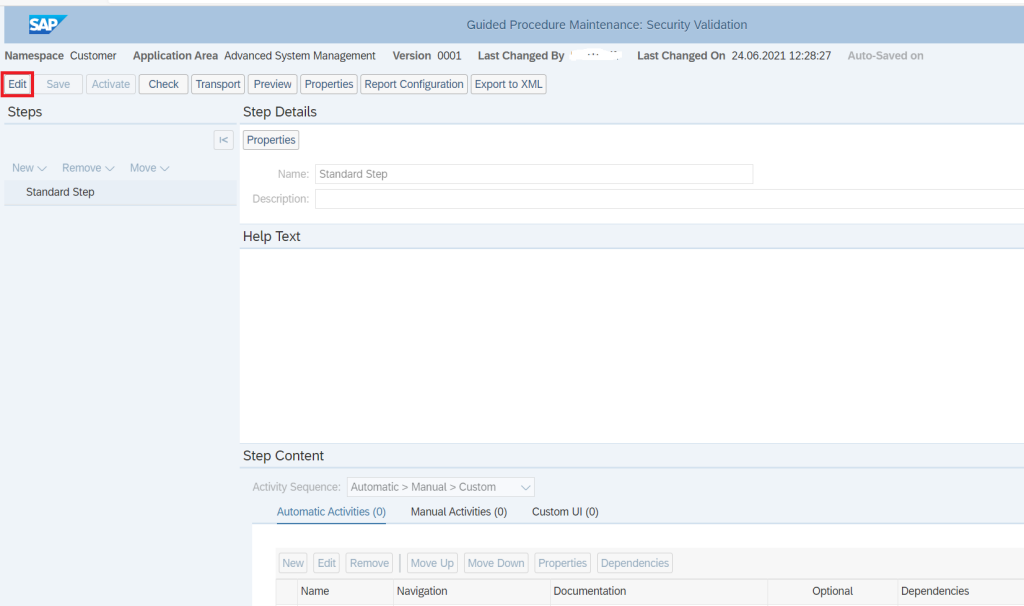
Now you need to add a automatic step to the guided procedure that will execute the security validation policy. For this, in the Step Details section, enter a step name and description.
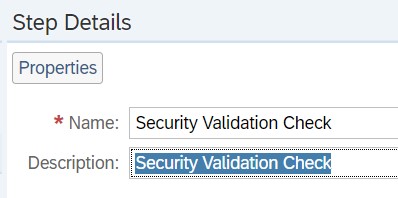
Navigate to Step Content block. In the Automatic Activities tab and click on New.
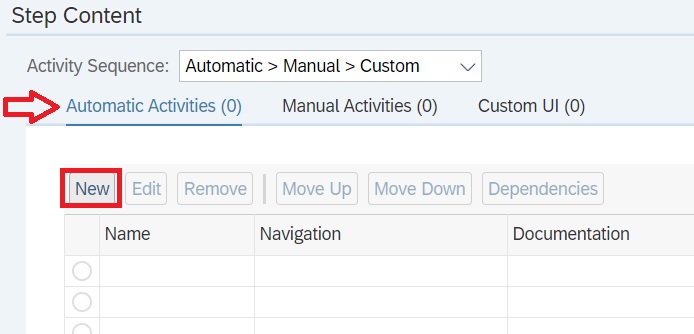
In the pop-up, select the option "Select a Plugin" and select the plugin Configuration & Security Analytics
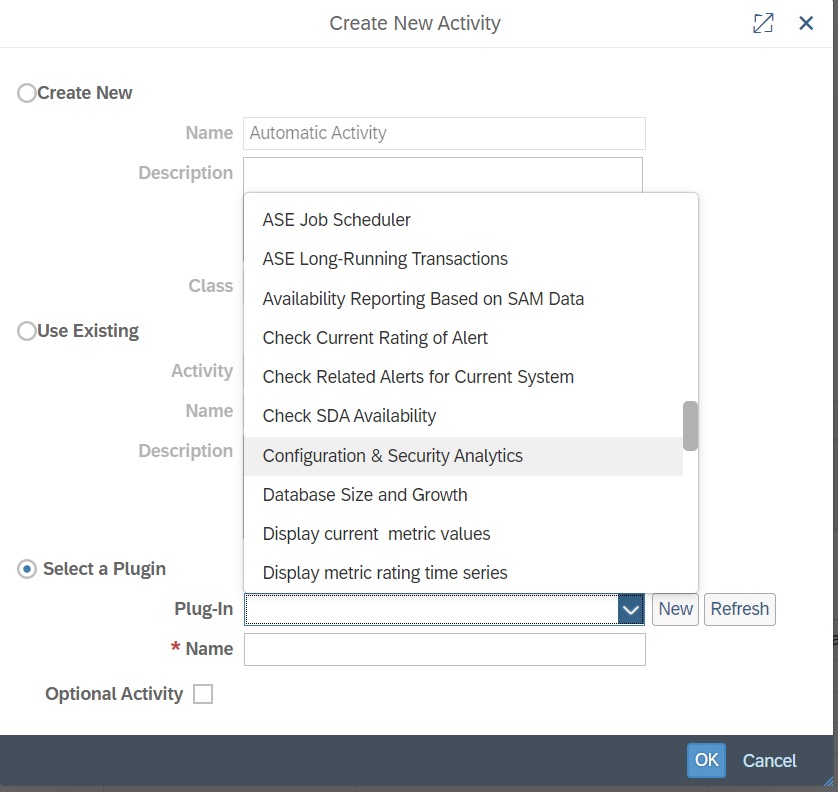
After selecting the plugin, expand the attribute section and provide the CSA policy name and click on OK.
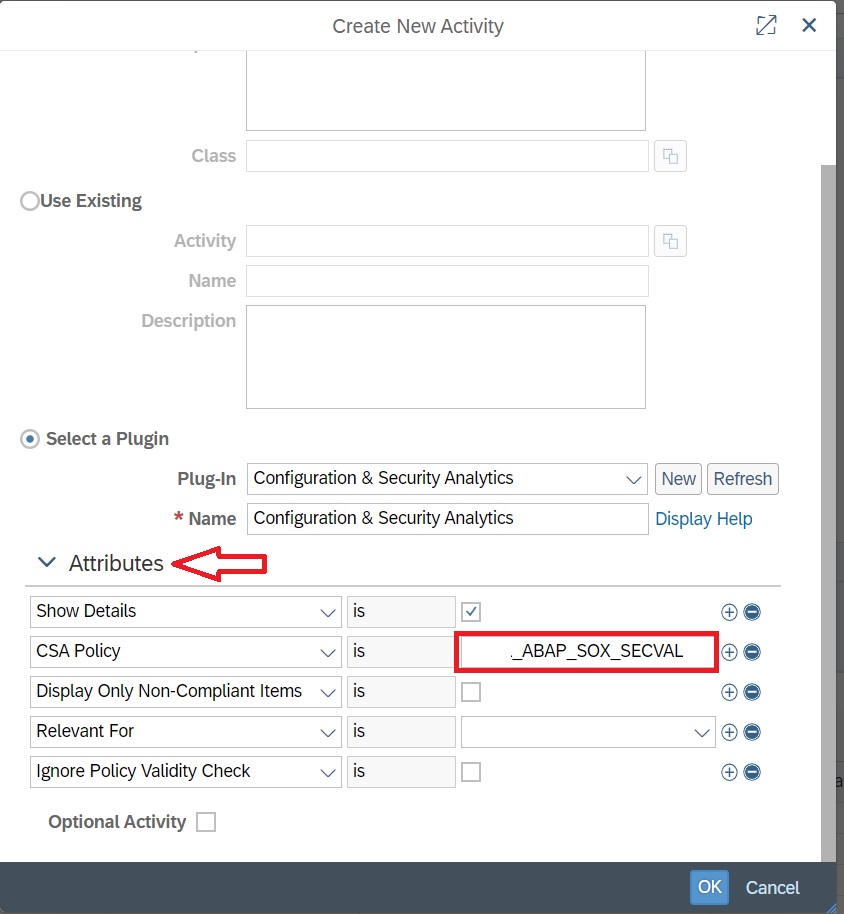
Back in the main screen save and activate the Guided procedure.
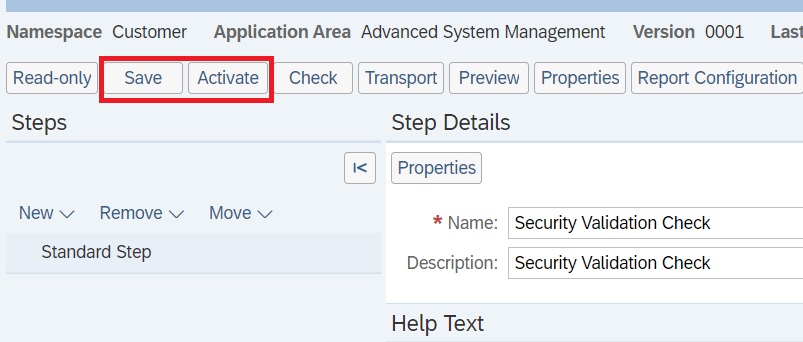
Now you can use this guided procedure to schedule an automatic execution to send an email report. You can do it in a similar fashion to sending email for System Health check report as explained here.
For more details on what all you can do with guided procedures, refer to the SAP Focused Run Expert Portal.
With the help of Security and Configuration validation you can quickly get an overview of the security compliance of your systems.
Questions that will be answered in the blog are:
- How to convert your security baseline into a SAP Focused Run Policy XML file?
- Does SAP provide best practices for security baseline?
- How can I run a check against many systems?
- How can I see which security parameters are ok and which ones are not ok in one overview?
- Can I apply a temporary exemption to the policy?
- Can I be alerted if a security parameter is changed from compliant to non-compliant value?
- How many security policies should I create?
SAP Security baseline
SAP publishes a generic SAP security baseline template. For more information on this template, read this blog.
On the SAP github for Focused Run, SAP has put the XML policy files that correspond to this security baseline:
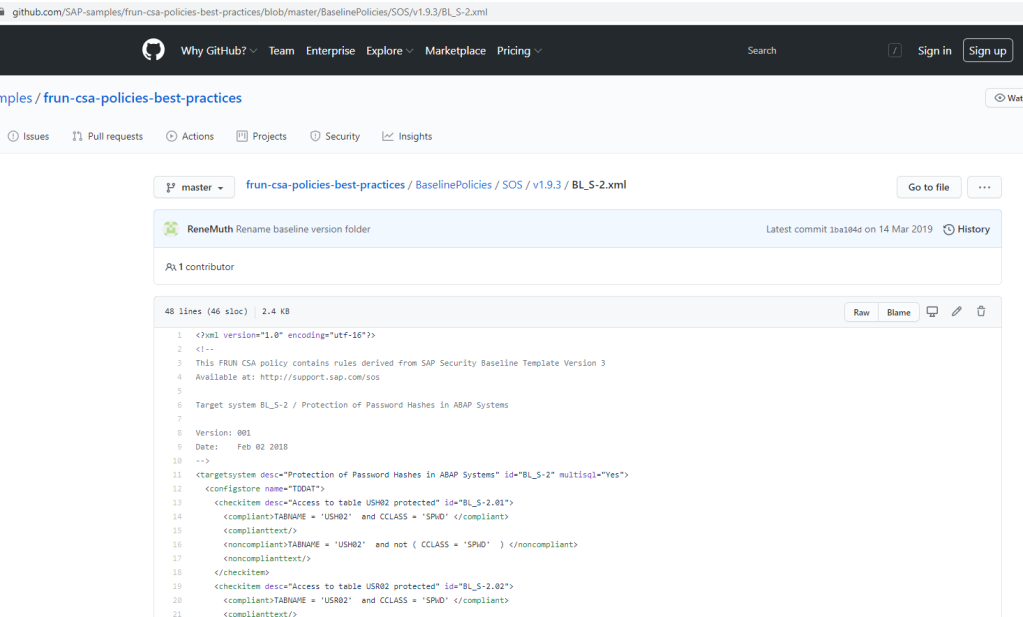
The formally published version of the SAP security baseline is version 2.1. The published github files are only updated until version 1.9.
Company security baseline
The SAP security baseline can be used as a quick start. But it still needs to be tailored to your company:
- Values might need to be altered (example; length of password)
- Values might not be relevant for you (this normally not the case, but it could be)
- Extra checks that are not in the SAP baseline need to be added
Exemptions
We will explain later below in the blog how to deal with exemptions. A good example of an exemption is that you have a rule, but cannot apply it to all systems. Example is the login/disable_multi_gui_login parameter. By definition you want to set it to 1 to forbid multiple logons. But for 1 older system this is not possible and you have agreed with security team on an exemption. In this case, you don't want to have a new policy. You keep the single policy but apply the exemption.
Creating the policy file(s)
With the help of the examples in the SAP security baseline, you can build your own company security baseline policy XML file.
In this file I have made an example which contains a lot of password and logon parameter related checks for the ABAP stack:
Goto the Policy Management FIORI tile:

Create a new policy and give it a meaningful name and description:
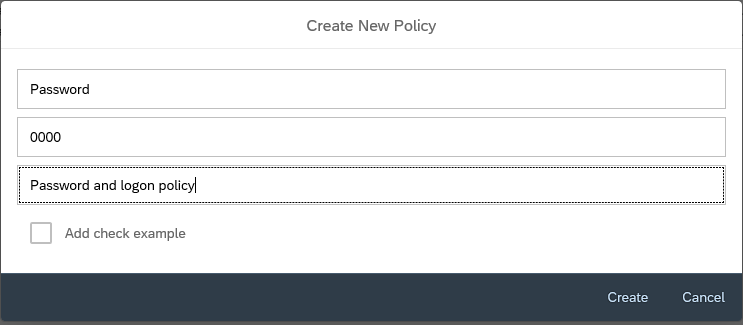
Now press the edit button and copy and paste the content:
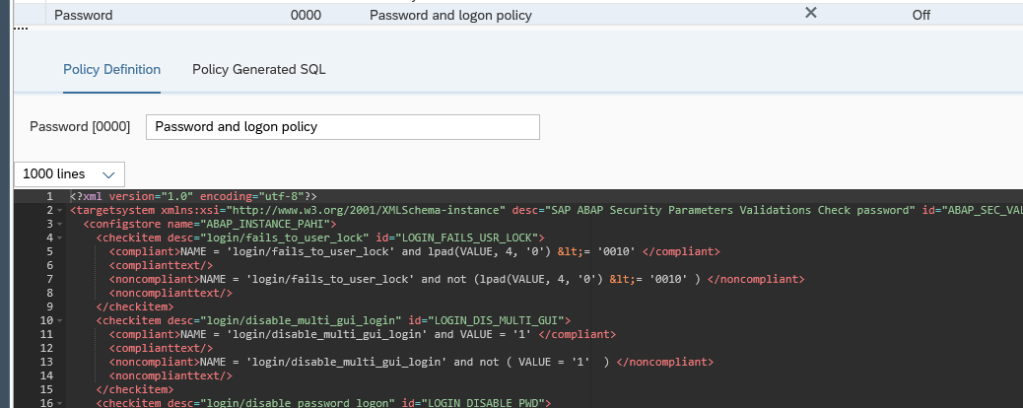
Now Save the policy, Check and Generate. Now you are ready to run.
You can modify the existing values in the XML sample to your need. After it is changed, Save, Check and Generate again.
Running the baseline policy
Start the Configuration and Security Analytics tile:
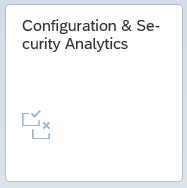
Select the Policy, and let the system run to get the results:
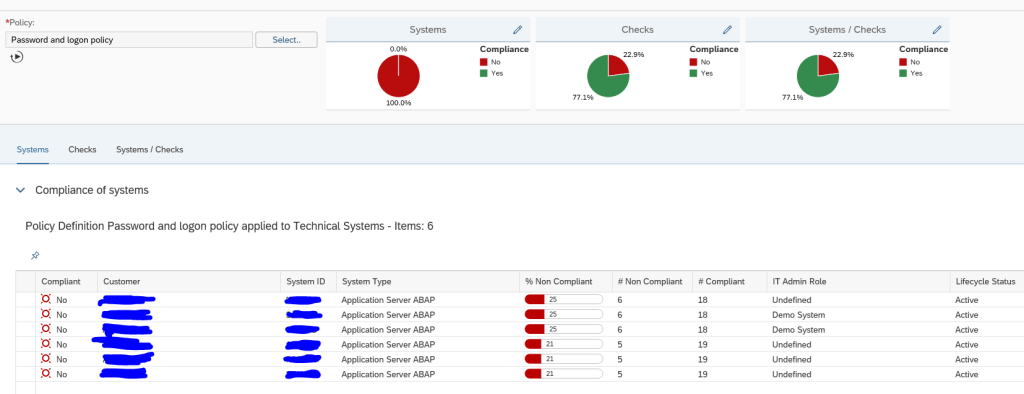
By clicking on the tab Checks you can zoom in on which items are not ok:

By clicking on a specific check you get the details for that check, which systems are not ok, and what the current value is in the system:

In this case the value 0 for special character is not ok. It should have been 1.
The tab System/Checks gives you an overview of all systems and all checks in one shot (you do need to expand the columns to more values):

Applying an exemption
Ideally you want to solve all the issue by changing the security parameters to meet the security baseline. This is not always possible. After agreement with your security team an exemption can be applied.
When you have done the security baseline run, click on the bottom left the Links icon and select Exemptions for Policies:
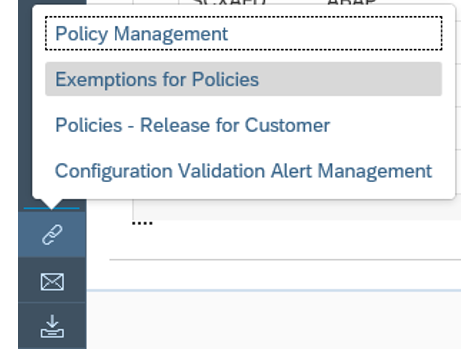
In the next screen press the create button to create an exemption:
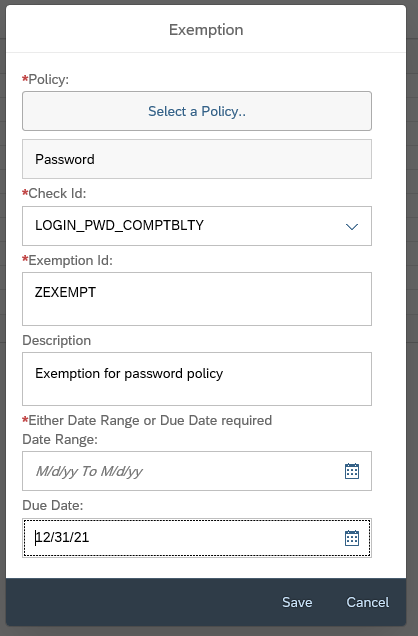
Select the policy and the specific check you want to exempt (in our case we use the logon password compatibility as example) and set a due date or date range for which the exemption is valid. By setting the due date, it is valid for all systems.
With a date range, you can make the exemption applicable for selected system(s):

Remark: this one is using date range!
Now you can run the security policy again:
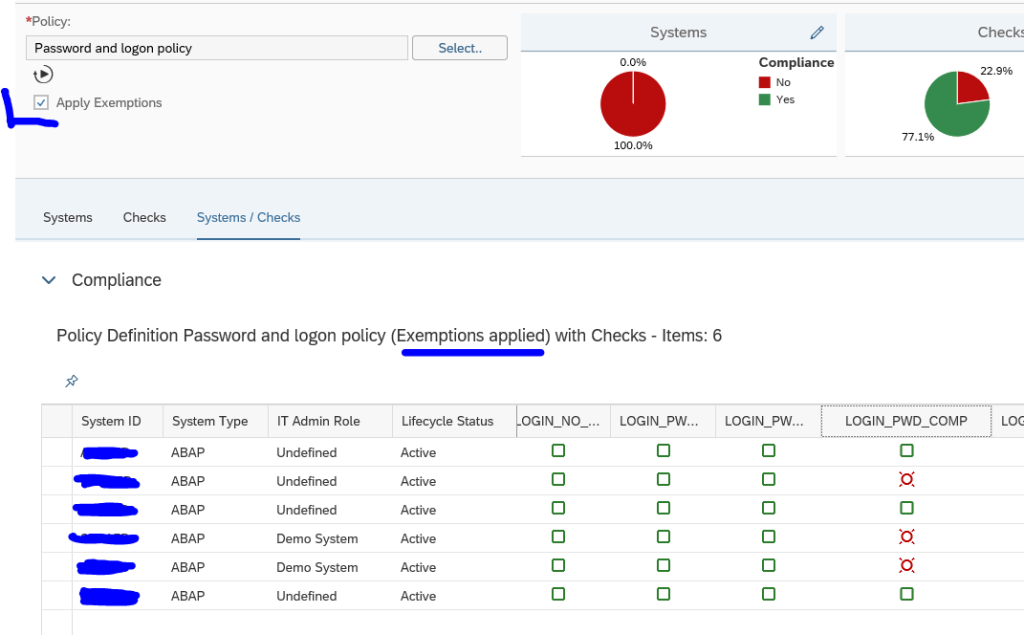
You can see in the text exemption have been applied. Also the tick box for Apply Exemptions has appeared. You can untick the box to run the policy without the exemptions.
Alerting on non-compliant changes
Once you have everything under control and all green (meaning all systems are compliant to baseline, or exemptions are applied), you can set up alerting to inform you that a security parameter was changed into a non-compliant value.
When running the check, go to Links on bottom left of the screen and select the Configuration Validation Alert Management option:

In the next screen now create a new alert:
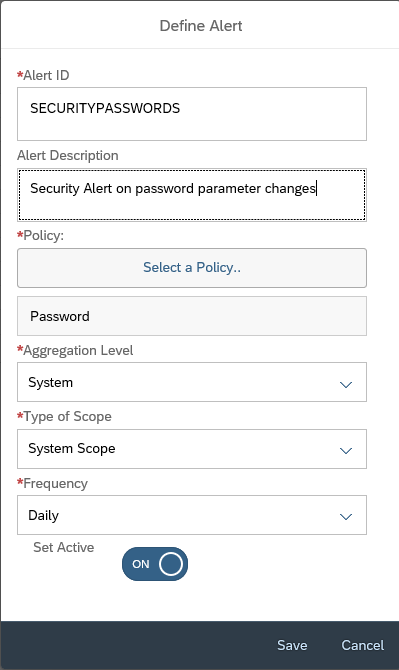
Important here: carefully set the frequency. Do select the System Scope. If you want to check ABAP systems for production only, do set this into the scope section. And Set it to Active. And Save.
Every day the check will run and you will get an alert upon detecting a new non-compliant item for this policy.
More information on using the alert management function can be read in this blog.
How much policies should I create?
You can have as much policies as you like.
As a best practice, create one big one for your companies security baseline per system type:
- All ABAP security parameters
- All JAVA security parameters
- All HANA security parameters
The initial setup might be quite some work, but once setup and cleaned up, the system will do all the work for you, and you need to check the alerts only.
For special cases you can create dedicated policies:
- Validation of existence of client 001 and 066
For ABAP OSS notes you can also create policy files. See this dedicated blog.
Mailing the results
Please read this dedicated blog on how to mail the results of a configuration baseline run on periodic basis.
In the previous blog we have explained to run a validation of ABAP security notes against your systems using Focused Run configuration and security validation.
Questions that will be answered in this blog are:
- How can I quickly run an entire year of security OSS notes versus my systems?
SAP github with security policy source files
SAP publishes files for the ABAP security notes each month on the SAP Focused Run Best Practices GitHub:

Here the policy files for the ABAP security notes are stored per year and per month.
Not all security notes for ABAP stack are in these files: only the ABAP notes which can be applied via SNOTE. Security notes for ABAP stacks which require parameter changes or patches are not part of this check!
For convenience I have collected the files per year.
These files are for convenience. It can be I made a mistake in assembling them.
Uploading the files
Goto the Configuration validation policy maintenance FIORI tile:

Create new policy and copy paste the text from the file:

Do this by choosing Edit and copy and paste the text in the editing section:

Now Save the policy. Check the XML. Generate the policy and check it by pressing Test Policy. Note that these are large files with many checks, so the testing can take some time. Run can be done via the Validate button or by following the instructions below.
Running the Security notes checks against the connected systems
To run the checks, goto the Configuration and Security Analytics FIORI tile:

Select the policy file to run:

Now be patient until the results are ready.
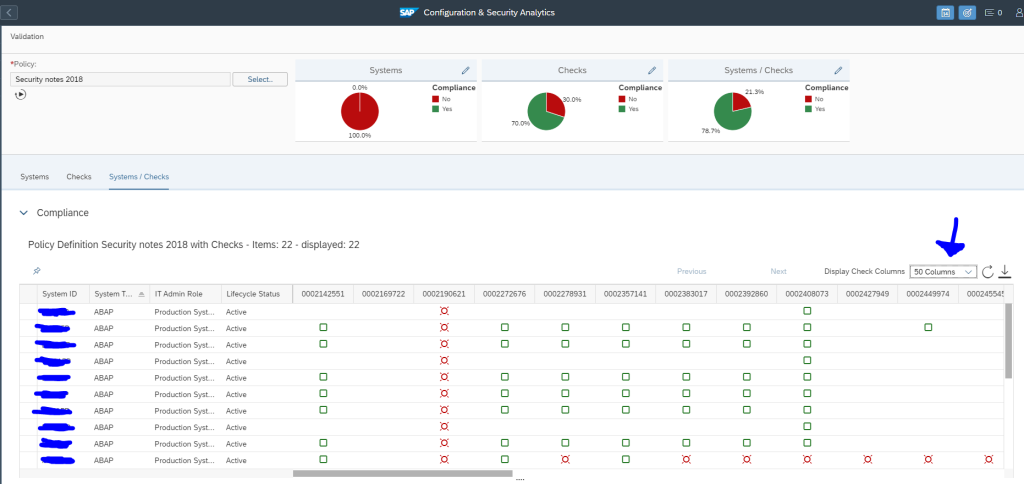
Make sure you expand the amount of columns.
If an ABAP notes is not applied it does not mean your system is not safe. You have define for which CVSS score and which systems you want to apply the security OSS notes, within which timeframe.
More on CVSS score see OSS note 2463332 – Security Note CVSS vector computation – SAP Solution Manager 7.1 and 7.2 and this SAP blog explaining the CVSS scoring in general.
This blog will give an overview of the Configuration and Security monitoring function of SAP Focused Run.
Questions that will be answered in this blog are:
- How does the Configuration and Security monitoring function of SAP Focused Run work?
- How can I quickly check my security baseline against all my systems?
- How can I quickly check the status of application of the security OSS notes?
Configuration and security monitoring goal
The goal of configuration monitoring is to compare system settings for security versus the baseline defined in Focused Run. Deviations from the baseline can be reported.
The security validation can be used for:
- Validation of ABAP security parameters
- Validation of JAVA security parameters
- Validation of HANA security parameters
- Security OSS notes
- Diverse topics like client opening and SAP_ALL assignments
The technical explanation is perfectly explained on the SAP Focused Run expert portal.
Configuration and security monitoring policy
To view the policies for configuration monitoring click on the FIORI tile for Policy Management:

You now reach the policy maintenance overview screen:

By selecting a policy, you can display the XML definition of the policy:

In a later blog we will explain fine tuning these XML definitions.
Running a policy
With the FIORI tile Configuration monitoring analytics you can run the policy against your systems:

After opening the tile you have to set the scope of systems. Then you reach the initial screen:
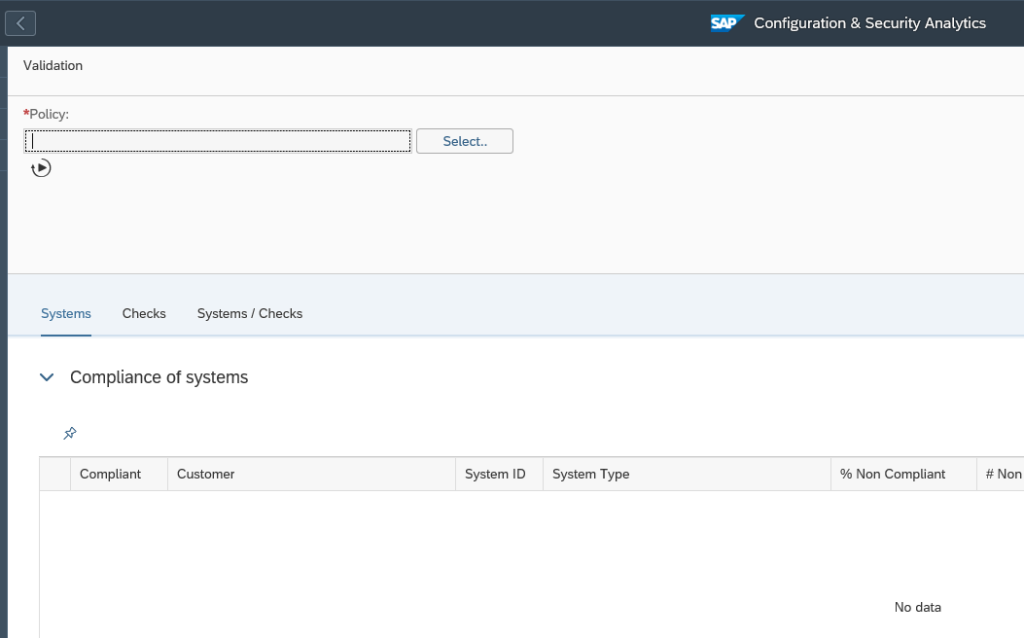
Now use the Select button to select the policy you want to run. The system will run the policy against the systems selected in the scope and show you the results:
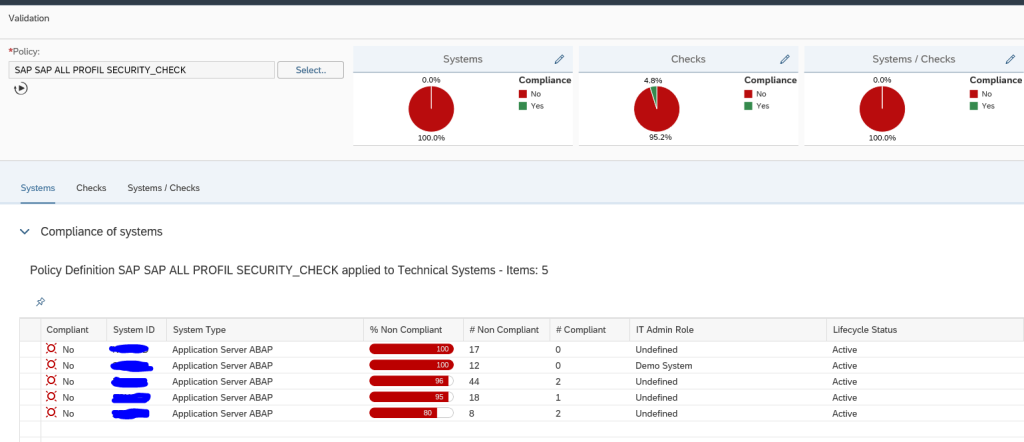
This is the overview across the systems. By clicking on a row you can zoom into that specific system:
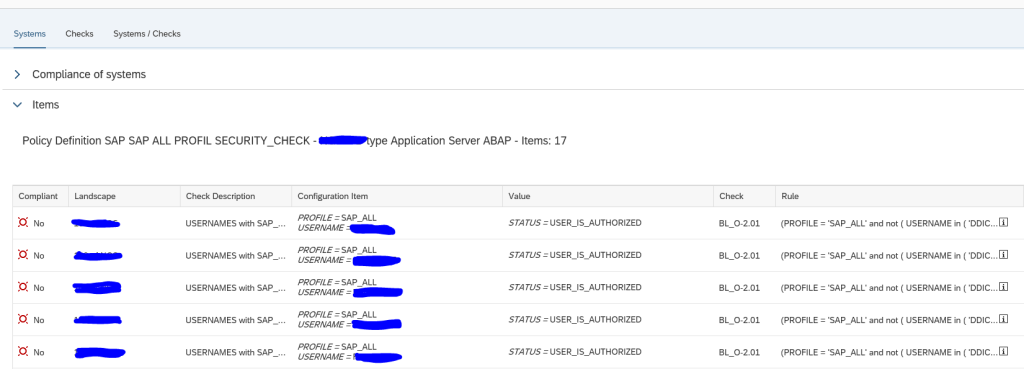
Security baseline validation
The example above is a simple single check. You can define your own XML with your security baseline settings. The running is identical as the example above.
What you can do now as well is go to the Checks tab to see which item has the most compliance issues across all the systems:

By clicking the Systems/Checks tab you can list out all items across all systems:

Remark: the default only shows 4 columns. You have to switch to multiple columns.
For the details on the setup of the configuration baseline, read this dedicated blog.
Read this blog on how to set up mail notification of the configuration baseline result.
Security OSS notes
On the SAP github XML files can be downloaded for security note validation. You upload the XML as a policy in the Policy Administration. You now can run this policy against your systems to follow up on the status of the security OSS notes:
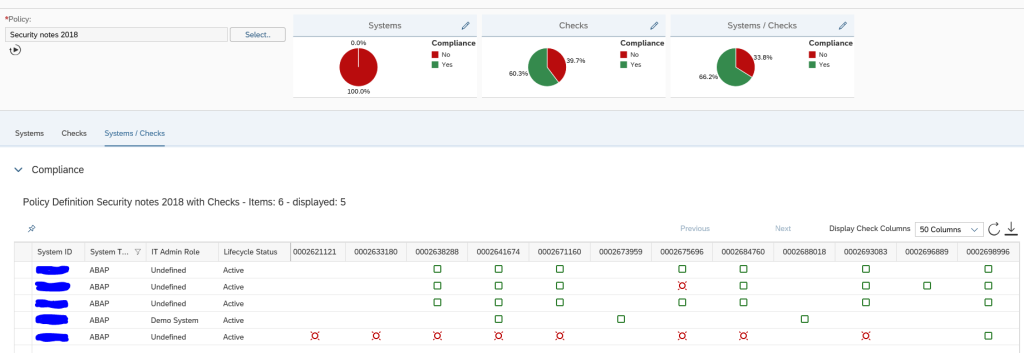
The XML file delivered by SAP checks the base version of the ABAP stack. So not all notes are relevant for all releases. If a note is not relevant the items is blank. If it is green, the note has been applied. If it is red, the note is not applied.
For more information about the setup and running of this function, read this dedicated blog.
SAP solution manager has a similar function called System Recommendations. The setup is more complex and follow up is far more cumbersome than with Focused Run. The only advantage of SAP solution manager System Recommendations is that the security notes content gets updated automatically. With SAP Focused Run you will need to monthly download the latest XML file on the security patch day.
Sap Solution Manager 7.2 Focused Run
Source: https://www.sapfocusedrunguru.com/category/configuration-monitoring/